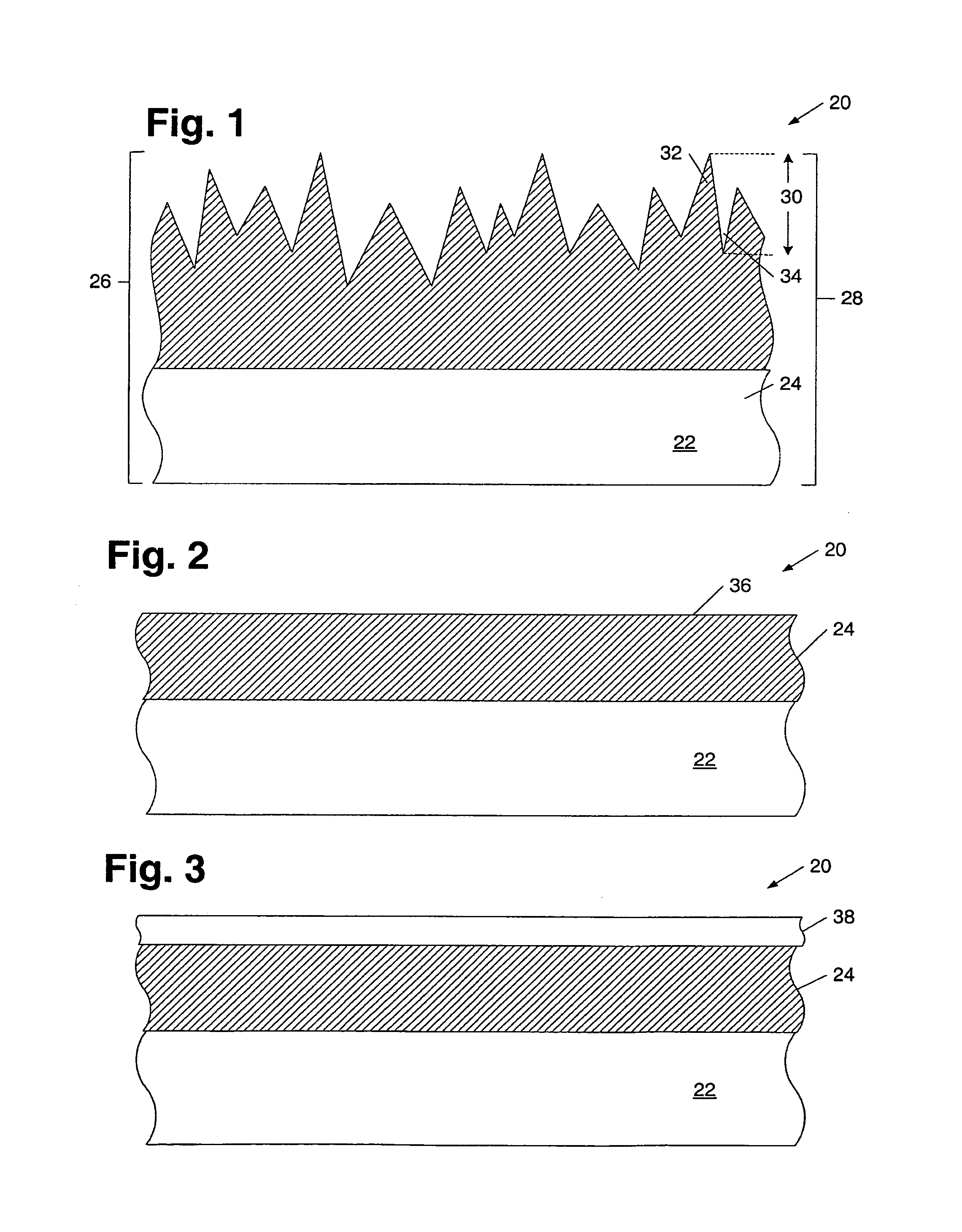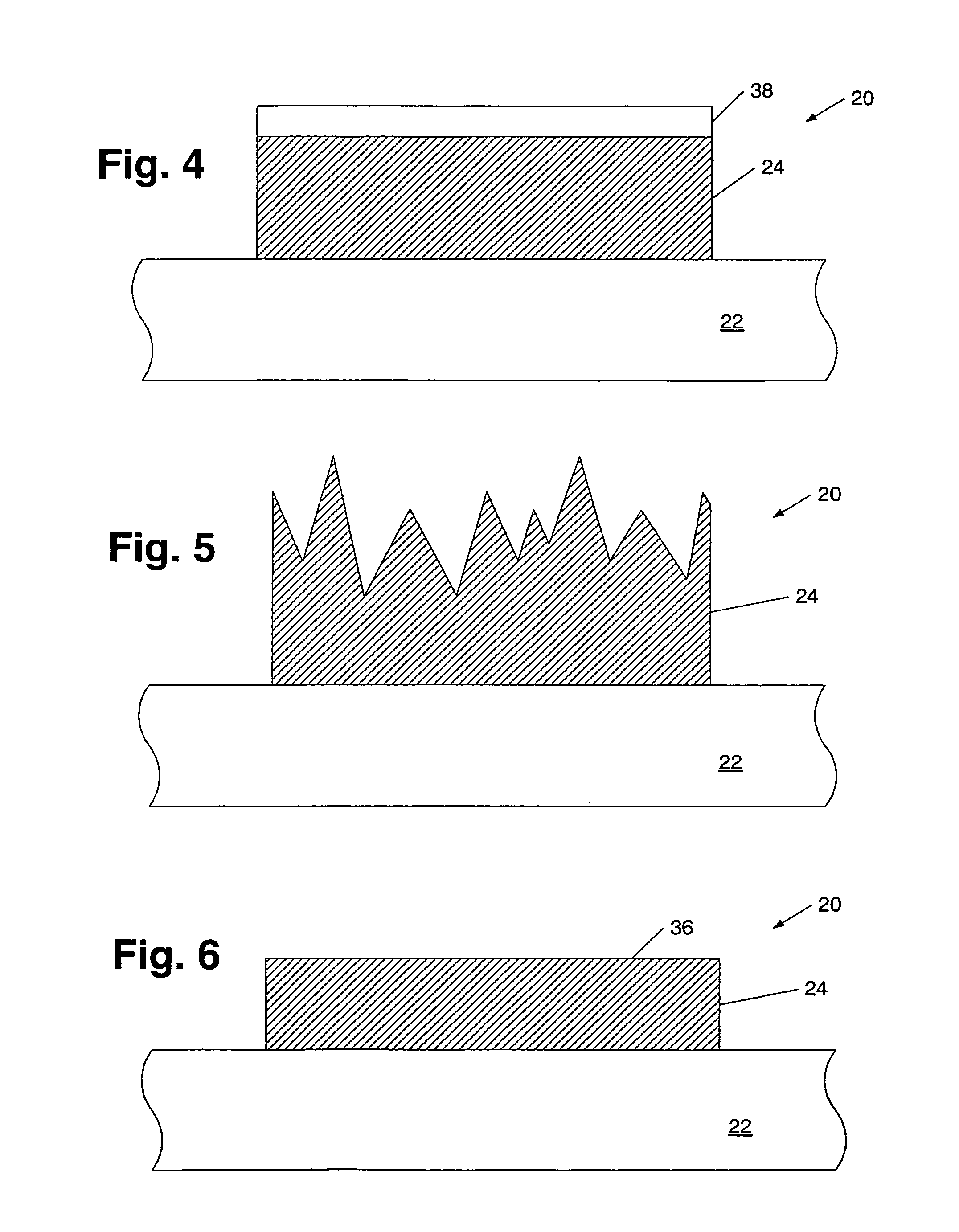Smooth metal semiconductor surface and method for making the same
a metal layer and substantially smooth technology, applied in semiconductor devices, semiconductor/solid-state device details, electrical devices, etc., can solve the problems of affecting the operation of a device, the breakdown of the junction within the device the breakdown of the junction at a relatively low voltage, so as to reduce the mean surface roughness of the metal layer, reduce current, and consume less power
- Summary
- Abstract
- Description
- Claims
- Application Information
AI Technical Summary
Benefits of technology
Problems solved by technology
Method used
Image
Examples
Embodiment Construction
[0036]Turning to the drawings, exemplary embodiments of methods for processing a semiconductor topography are shown in FIGS. 1-11. In particular, methods for reducing the mean surface roughness of a metal layer are provided. FIG. 1 depicts a partial cross-sectional view of semiconductor topography 20 in which metal layer 24 is arranged upon semiconductor layer 22. The upper portion of metal layer 24 is shown with a plurality of peaks and valleys representing the surface roughness of the layer. It is noted that the peaks and valleys are greatly exaggerated with respect to the thickness of the layer to emphasize the roughness of the layer prior to the application of the smoothening process described herein. In general, the mean surface roughness of metal layer 24 may be on the order of one hundred or a few hundred angstroms while the thickness of metal layer 24 may be between a few hundred angstroms and a few thousand angstroms. The measurement of the surface roughness of a layer is d...
PUM
| Property | Measurement | Unit |
|---|---|---|
| surface roughness | aaaaa | aaaaa |
| surface roughness | aaaaa | aaaaa |
| thickness | aaaaa | aaaaa |
Abstract
Description
Claims
Application Information
 Login to View More
Login to View More - R&D
- Intellectual Property
- Life Sciences
- Materials
- Tech Scout
- Unparalleled Data Quality
- Higher Quality Content
- 60% Fewer Hallucinations
Browse by: Latest US Patents, China's latest patents, Technical Efficacy Thesaurus, Application Domain, Technology Topic, Popular Technical Reports.
© 2025 PatSnap. All rights reserved.Legal|Privacy policy|Modern Slavery Act Transparency Statement|Sitemap|About US| Contact US: help@patsnap.com



